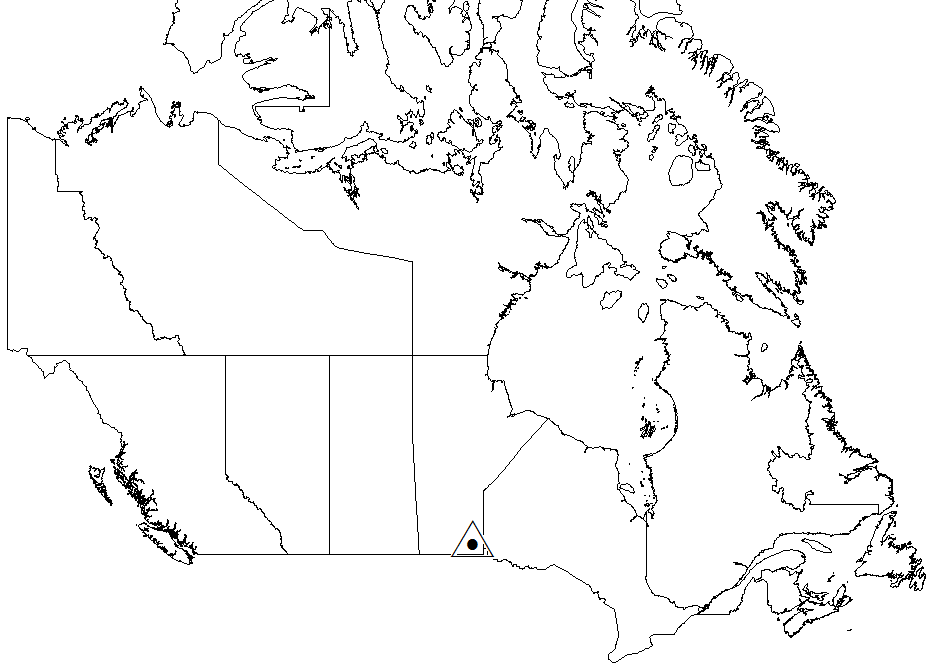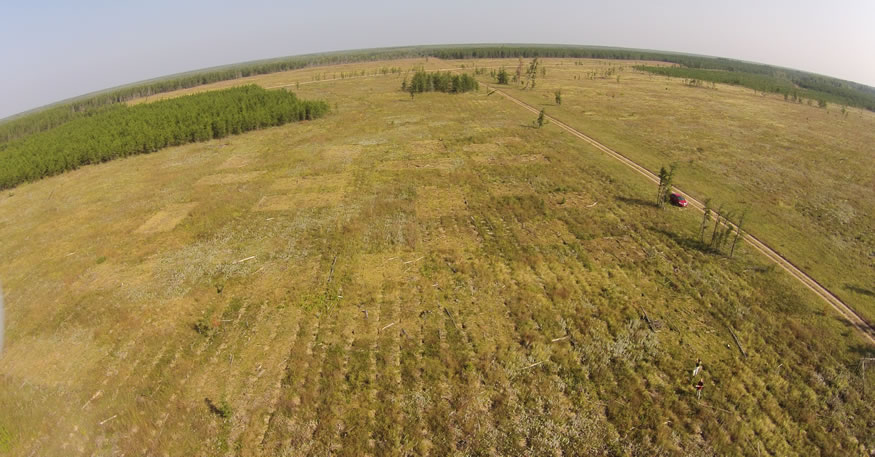Pineland wood ash trial

Location
Southeastern Manitoba
Ecozone: Boreal Shield
Elevation: 320 m
Climate
1981 to 2010 monthly climate point estimates generated from the Natural Resources Canada climate modeling project.
Mean annual precipitation: 635 mm
Mean minimum temperature in January: −22.5°C
Mean maximum temperature in July: 25.0°C
Site description
Before the experiment, the site supported a jack pine (Pinus banksiana Lamb.) stand that was approximately 30 years old. The soils developed from glaciofluvial deposits and have a sandy texture. They are predominantly Brunisols with a forest floor layer of approximately 2 cm.
Ash description
The ash used for the Pineland wood ash trial was produced in a biomass burner. The ash feedstock was predominantly jack pine wood chips with some bark. A mixture of fly and bottom ash was used for the experiment, and the ash was not pretreated before application.

Aerial view of the experimental site and set-up for the Pineland wood ash trial.
Treatment description
Before plot establishment, the Pineland wood ash trial was clearcut using whole-tree harvesting. In May 2015, jack pine seedlings were planted at a density of 2,500 stems per ha and four ash and urea treatments were applied using an experimental design to compare both the individual and combined effects of wood ash and urea. Treatments included (1) 0 Mg ash per ha or 1.5 Mg ash per ha; and (2) 0 kg urea per ha or 70 kg urea per ha. The quantity of ash applied (Mg per ha) was calculated based on the dry weight of the ash, and the ash was applied to the soil surface by hand. Treatments were replicated 5 times when the experiment was set up.
Monitoring
Monitoring treatment effects on trees, understory vegetation, and soil chemistry is ongoing. Data being collected include:
- Trees
- Height, diameter, and biomass
- Foliar nutrients
- Understory vegetation
- Percent cover and biomass
- Soil chemistry
- Organic carbon
- Available phosphorus
- Nitrogen mineralization
Main contact
John Markham, Professor, Department of Biological Sciences, University of Manitoba
Page details
- Date modified: